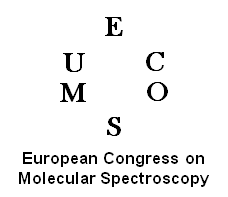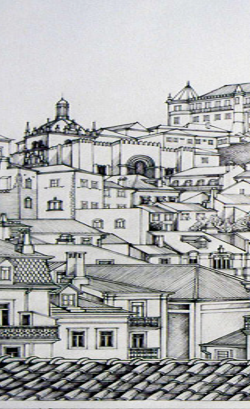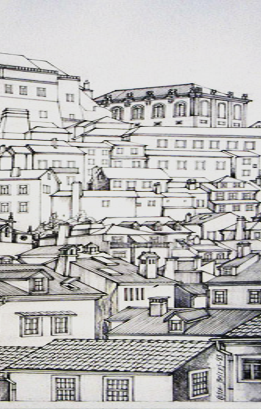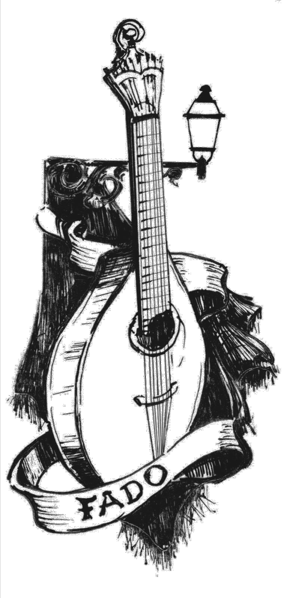ABOUT COIMBRA
 .... City of Knowledge, Criativity and Culture ....
.... City of Knowledge, Criativity and Culture .... 
Coimbra is a very beautiful and peaceful town situated on the banks of the Mondego River, approximately 185 km Northeast of Lisbon and 98 km Southeast of Oporto. The climate is mild and the rainfall averages 750 mm annually. The town is very well served of public transports and is easily accessible both by bus or fast trains either from Lisbon or Oporto. Coimbra's industry is not very strong, but both the commerce and the sector of services (specially the later) are very important and famous by their very high quality standards. The District of Coimbra has an area of about 3,956 km2. Roughly oblong-shaped, it extends inland from the Atlantic Ocean halfway across the country. The western sector in the lower Mondego Valley is low and rolling country, but in the southeastern part, in the Serras da Lousã and Estrela, it rises to more than 1,200 m. In the west side of the District, at the mouth of Mondego, is Figueira da Foz, a summer resort and fishing centre, with its beautiful beaches of white sand.
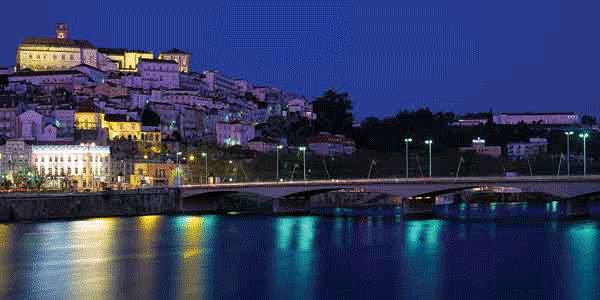


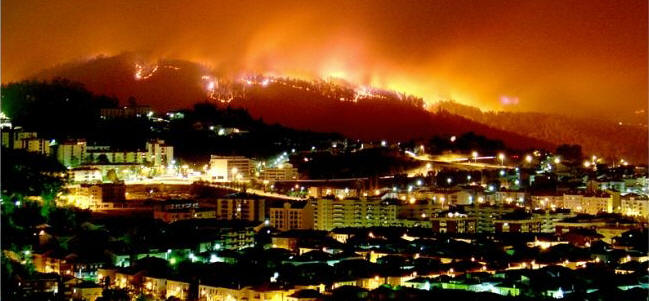
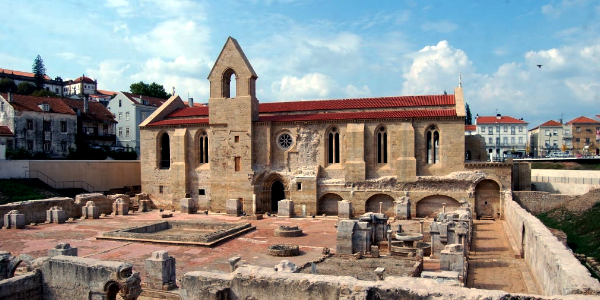
BRIEF HISTORY AND LIFE
The city of Coimbra served as the capital of Portugal from 1139 to 1385, and was the birthplace of six monarchs from the Portuguese 1st Dynasty. Noted for its cultural traditions and artistic treasures, Coimbra was long the intellectual capital of Portugal and remains one of its most picturesque cities. With its suburb of Santa Clara, the city spreads out along the two sides of the Mondego River. The older part of the city, with its narrow, crooked streets, is on a hill. Below it on all sides are the newer, more regularly patterned city districts. The life of the city depends primarily on the University of Coimbra. As in medieval universities, the students wear long black capes and ribbons of varying colour to distinguish the various faculties. The institution was founded in 1290 and it is one of the oldest universities in Europe. Like an acropolis, the white buildings of the University now dominate the hilltop overlooking the north bank of the river. Coimbra has museums of natural history and archaeology and a botanical garden. The first cathedral, Sé Velha, in the middle of the old city, is one of the best examples of Romanesque churches in Portugal. The new Cathedral, Sé Nova, begun by the Jesuits in the late 16th century and consecrated a cathedral in 1772, has a single nave in the Roman style. Santa Cruz, a church dated mostly from the Renaissance, is famed for its cloisters and for the tombs of Afonso Henriques and his son Sancho I, the first two kings of Portugal. In the convent of Santa Clara, built on the height overlooking the south bank of the Mondego, are the remains of the sainted Queen Elisabeth, patroness of the city and of the University.
THE UNIVERSITY OF COIMBRA
The University of Coimbra is certainly one of the most prestigious and traditional universities in Europe and the most important cultural centre in Portugal. The richness of its long History of seven centuries, its unique tradition and the quality and variety of its architecture are very well documented. However, the University of Coimbra has been able to conciliate the past with both the present and future and it is also a "modern" university, very well equipped with up-to-date technology in the various fields of knowledge, and where science and technology are considered to play an essential role. The Faculty of Sciences and Thecnology has actually more than 8000 students and more than 300 senior professors that dedicate to the most relevant branches of fundamental and applied Science, being the largest and the most prominent faculty of the University. The Chemistry and the Physics Departments are certainly among the most important research centres in these fields of research in Portugal and both have since long ago attained the respect of the international scientific community.
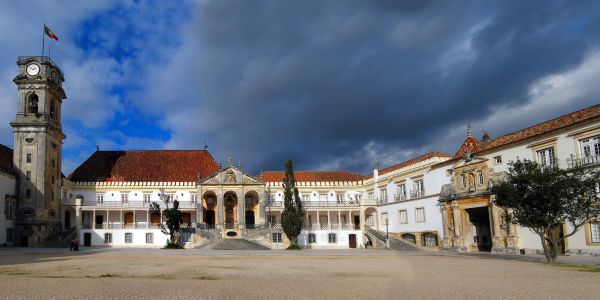
VENUE - the meeting place
EUCMOS 2018 will be held at the Hotel Vila Galé Coimbra,
which is located close to the historic center of twon.
The dance was the theme chosen for the decoration of this hotel in Coimbra, which has 229 modern rooms, adapted for guests who are travelling on leisure or business. But you may
also “twirl” by the outdoor pool and contemplate the river therefrom, by the two restaurants, the bar or the library. To get your well-deserved rest, take a break at the Satsanga spa,
which features an indoor pool, sauna, Turkish bath, Jacuzzi and gym.
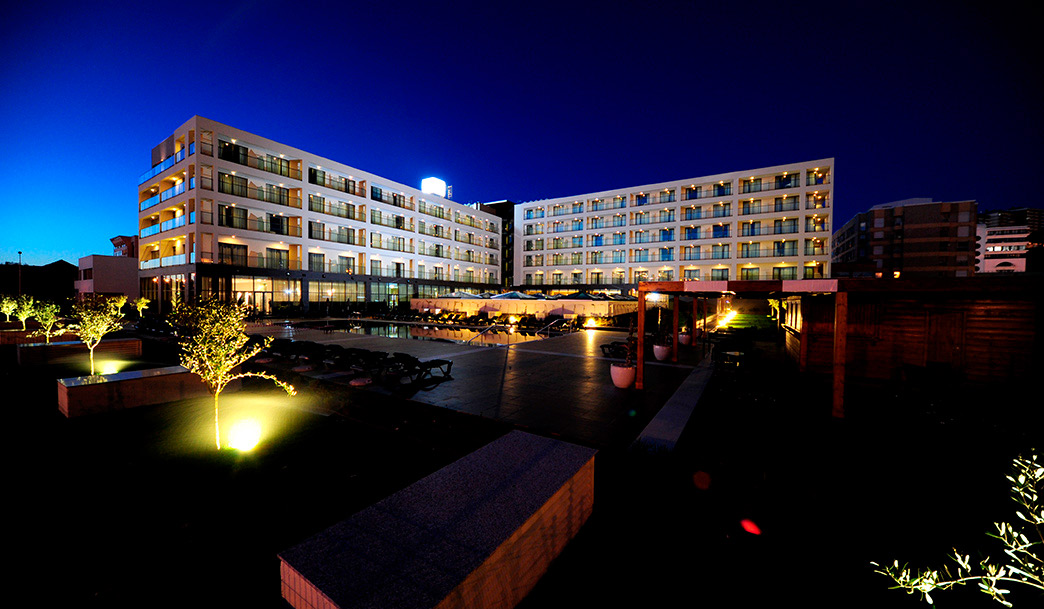
Address:
Rua Abel Dias Urbano, 20
3000-001 Coimbra
Portugal
GPS: N40º 12’ 51’’ - W8º 26’ 08’’
Telephone: (+351) 239 240 000
Fax: (+351) 239 240 050
E-mail: coimbra@vilagale.com
travelling information
Coimbra is easily reached both from Lisbon or Oporto international airports by FAST TRAIN ("Intercidades" or "Alpha Pendular").
From Lisbon, the train trip takes about 1.30 h; from Oporto, ca. 1:00 h. Train timetables can be downloaded from the website of the
Portuguese train company, "CP".Tickets can be purchased at the train stations.
Please buy a ticket to "COIMBRA - B". Both Hotels Vila Galé Coimbra and D. Inês stay about 1 km far from the train station, at walking distance. However, there are Taxis
easily available at the train station (trip costs a few Euros), in case you prefer. Other Hotels and the Residences stay a bit more far away and we advise you to take a
taxi (trip costs less than 10 Euros in all cases).
If you are DRIVING from Lisbon or Oporto you have to take the highway A1 and leave it at "Coimbra Sul" exit if driving from Lisbon or "Coimbra Norte" if driving from Oporto. Highways in Portugal are excellent, but expensive.
When arriving to a toll please do not enter the "Via Verde" which requires a special device for automatic payment.
